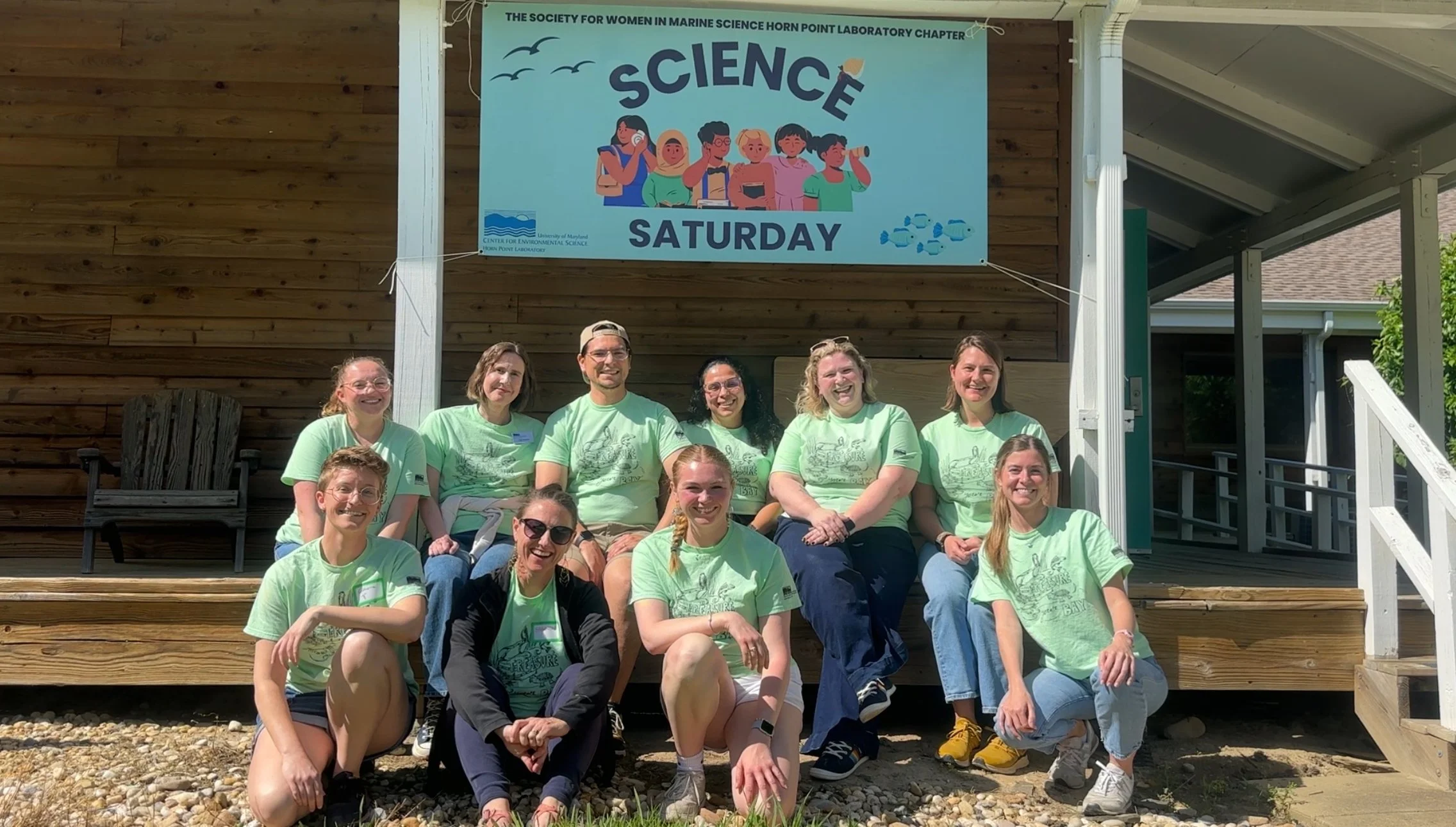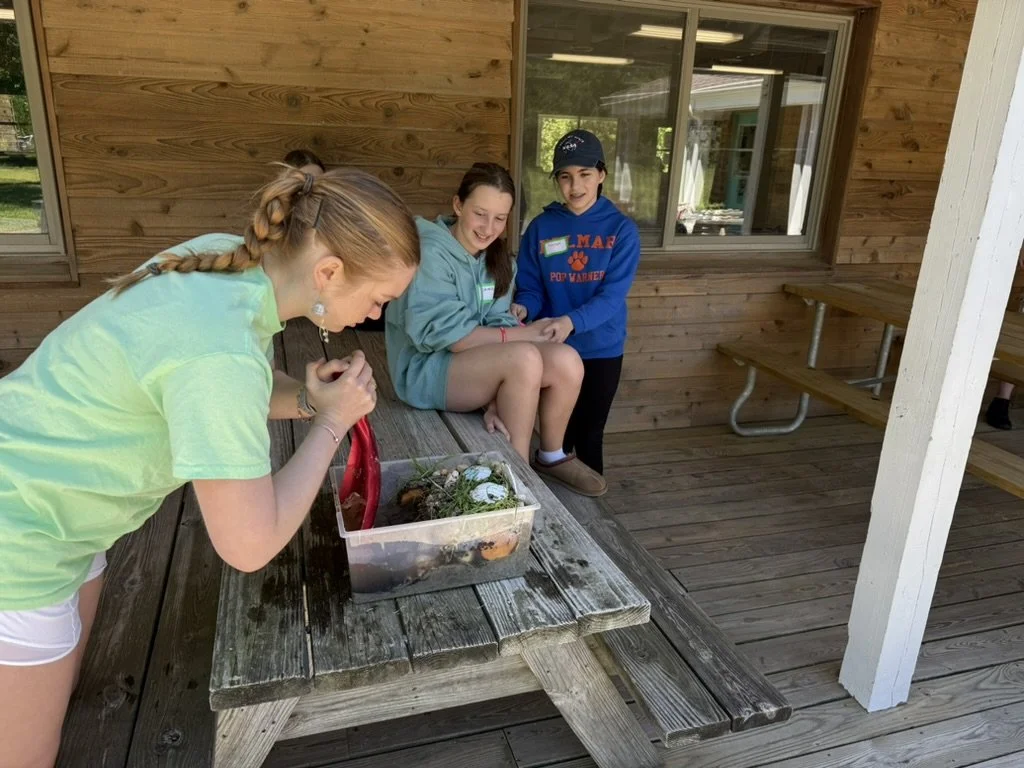Celebrating Curiosity and Discovery at Science Saturday!
Written by: Julie Trommatter
As David Attenborough once said, “If children don't grow up knowing nature and appreciating it, they will not understand it. And if they don't understand it, they won't protect it. And if they won't protect it, who will?”
At Horn Point Laboratory, members of the Society for Women in Marine Science (SWMS) share the belief that engaging kids with nature is essential to cultivating the next generation of environmental stewards and scientists. This next generation may not have the same access I did to Ms. Frizzle’s mantra — “Take chances, make mistakes, and get messy!” — so we need to help fill that gap.
Thanks to generous support from Maryland Sea Grant, the Chesapeake Bay Trust, and the Society for Women in Marine Science, Science Saturday brought together 21 enthusiastic participants to experience science in fun, hands-on, and accessible ways. An additional 18 volunteers generously offered their time and energy to guide, teach, and support students throughout the day.
After everyone checked in, we kicked things off with a food web icebreaker. Students tossed a ball of twine to each other, naming organisms and explaining their ecological connections as they wove a web across the room. It was a fun, low-pressure way to loosen up — who doesn’t love the chance to throw something at a new friend? More importantly, it sparked conversations about interconnectedness in ecosystems and set the tone for the day.
Students then rotated through a series of activities, including flying drones, building science models, exploring living shorelines, and dissecting oysters. These hands-on experiences reflected the wide diversity of scientific pathways — all brought to life by volunteers who generously shared their expertise.
Several SWMS members at HPL focus their research on oysters, so that activity was a natural fit. As students dissected oysters, they learned about anatomy, physiology, and the ecological role oysters play in the Chesapeake Bay. Along the way, they were introduced to safe lab practices and the importance of maintaining clean, organized workspaces — skills foundational to any scientific career.
Another easy choice was incorporating living shorelines. Many of our volunteers work on the restoration of Poplar Island or study submerged aquatic vegetation (SAVs). Students built miniature beaches to demonstrate how green structures can reduce erosion, then discussed how human populations impact land and water. These tangible models helped connect scientific theory to real-world environmental challenges.
Drones were another activity shaped by volunteer expertise. This session helped reframe how students perceive the role of technology in science. While “tech” can often seem expensive or inaccessible, even inexpensive, store-bought drones can be powerful research tools — used in animal behavior studies, habitat monitoring, population tracking, and more. Giving students the chance to fly the drones themselves was a highlight for many, sparking excitement and curiosity.
Creating scientific models using craft supplies blended creativity and science — a powerful combination for engaging young learners. While adults may picture computer-generated graphics when we hear “model,” hands-on crafting can bring abstract ideas like DNA, cells, or the solar system to life. By transforming STEM into STEAM, students were able to use artistic expression to make sense of complex scientific concepts.
The day wrapped up with a career panel featuring women working in a range of STEM fields. Students asked thoughtful questions, explored potential paths, and saw firsthand that science is not a one-size-fits-all career — it’s a field open to curiosity, collaboration, and creativity.
Through hands-on experiences, HPL SWMS helped spark curiosity, creativity, and a lasting interest in science among the students who joined us.
We believe that by making science accessible, personal, and fun, we can inspire the next generation to understand, protect, and love the natural world — just like we do.





